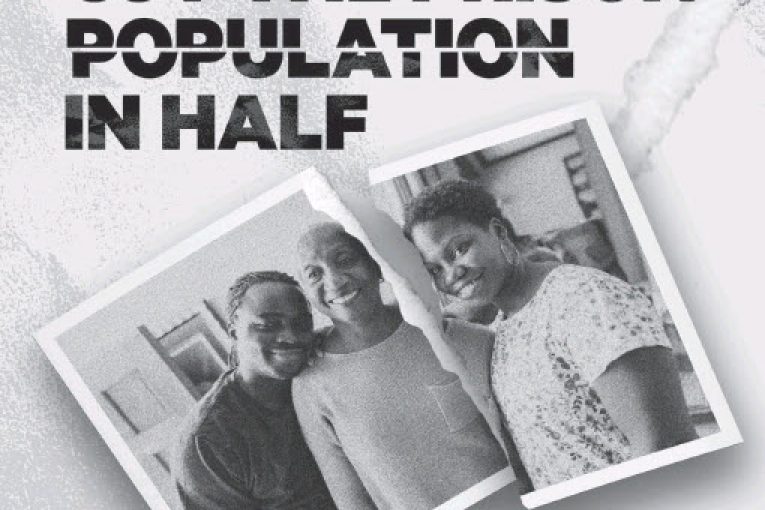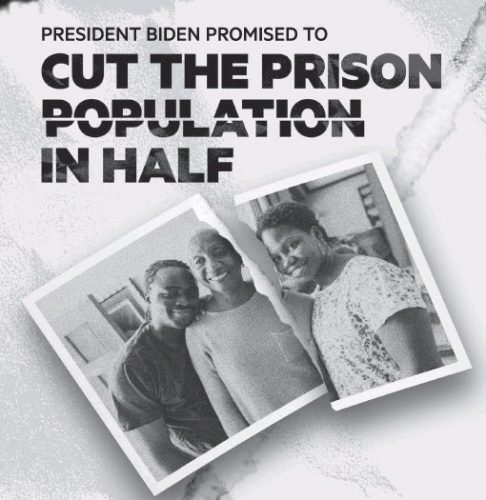

By Ramneet Singh
WASHINGTON D.C. – In a full page advertisement in the Washington Post, Color of Change and the ACLU demanded greater leniency from the Biden Administration for home confined inmates and broader prison reform (advertisement).
The advertisement demanded “President Biden deliver on his promise to cut the prison population in half. At the start of the pandemic, thousands of people were released from prison to finish their sentences on home confinement, many of whom are elderly and immunocompromised.”
The advertisement’s headline reads “President Biden Promised to Cut the Prison Population in Half.”
The ad noted that “the administration indicated that it would expedite individual clemency petitions for some of the people released under the CARES Act, but only those that qualified under certain arbitrary indicators. Now, thousands are still at risk of being sent back to prison when the pandemic recedes if President Biden does not take immediate action. This would be the single largest act of incarceration in U.S. history.”
The WP ad urges people to “sign the joint petition calling on President Biden to fulfill his promises and grant clemency to thousands immediately.”
“Prisons are not humane and the pandemic has only worsened conditions, making prisons potentially deadly for all who reside within their walls. To send anyone back to prison is not just cruel and unusual; it directly contradicts the promises Biden made on the campaign trail,” the ad quotes Scott Roberts, senior director, criminal justice + democracy campaigns at Color Of Change.
“We’ve been doing this work to ensure that people, particularly Black people, who continue to be at high risk of contracting COVID-19 can safely stay at home and rebuild bonds with their loved ones. President Biden must act on this. To not, is a clear indication that this will not be the administration that will begin to undo decades of harm caused by mass incarceration,” he added.
As an example, the CDC notes that “People in racial and ethnic minority groups often work in essential settings, such as healthcare facilities, farms, factories, grocery stores…” This could place them at a higher risk.
“We thank President Biden for beginning to consider the use of clemency to help people on CARES Act home confinement, but he must go further than his current plans and not needlessly exclude people from being granted clemency,” said Udi Ofer, deputy national political director of the ACLU.
“President Biden committed to the ACLU that he would reduce the federal prison population once elected, yet the federal prison population today is larger than it was one year ago. It’s time for the president to fully meet his commitments and do so through the power of clemency. Forcing people who are already home with their families to go back to prison would be cruel and would make no one safer,” Ofer is quoted in the WP advertisement.
The WP advertisement provides two Attorney General memorandums from April and March regarding eligibility. At this point in time, there are about 7,000 inmates. The overall number is about 31,000.
Expanding on Biden policy, the article notes that the petitions would be focused “on an individual basis for non-violent drug offenders under home confinement with less than four years left on their sentence.” It is noted the strenuous process that allowed them to be released in the first place.







Only half? Come on, go for 75% at least.
Half is not a capricious number
Two great examples of constructive comments… (now, three)
At least the other two comments somewhat made points. What’s the “point” of your comment?
Here is something about federal prisons and why I think 50 % reduction is very doable…
” Similarly, the federal prison system has a population profile very different from that of any state. The Federal Bureau of Prisons holds roughly 14 percent of the 1.6 million people in prison nationwide. While half of those housed in state prisons have been convicted of a violent offense, fewer than 5 percent of federal prisoners’ most serious convictions were violent offenses.
“Across states, the primary offense for 16 percent of the prison population is a drug conviction, weapons convictions are minimal, and immigration convictions are nonexistent. Conversely, in the federal system, drug offenses are the primary conviction for almost half (49 percent) of the prison population and immigration and weapons offenses account for another 25 percent”
That means that nearly three-quarters of federal prisons are filled with either drug or immigration offenses.